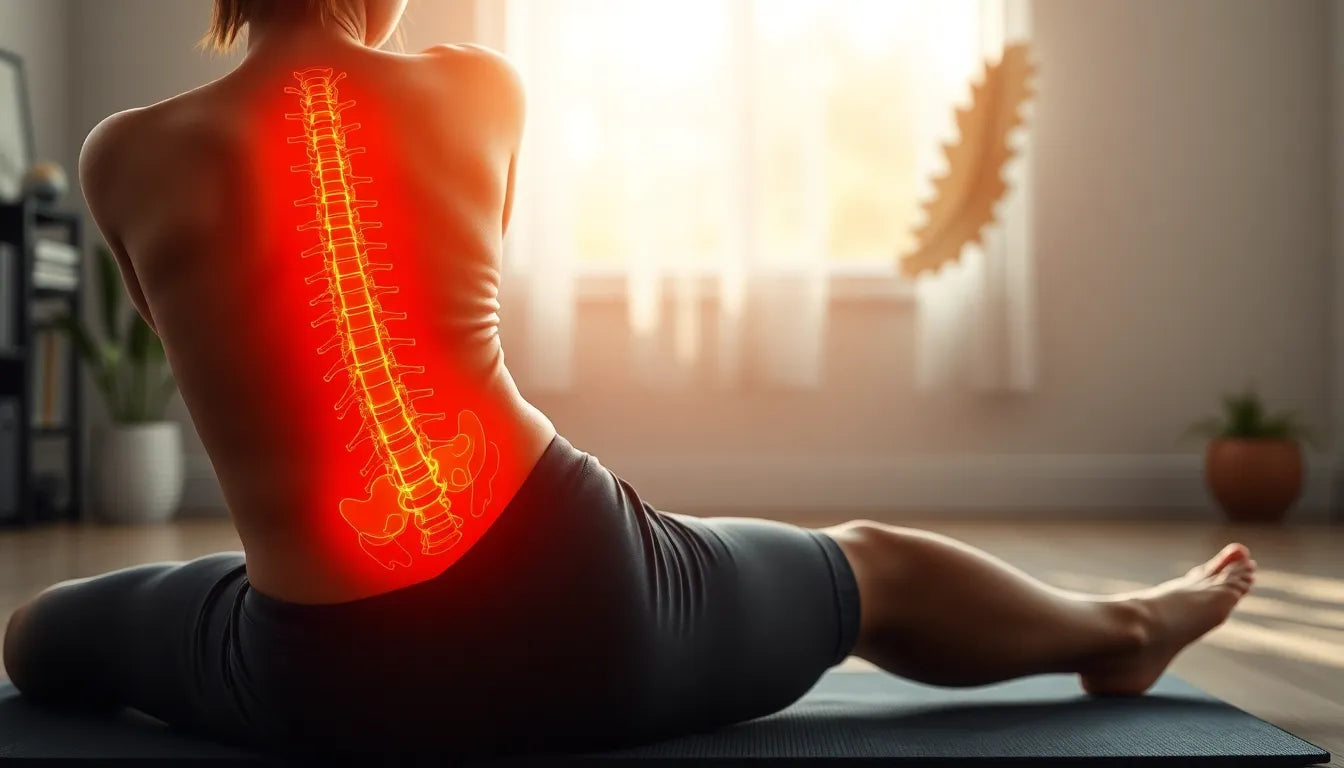In our fast-paced, technology-driven world, maintaining good posture can often take a back seat. Yet, the importance of proper posture in daily life cannot be overstated. Good posture is not just about standing tall; it's a crucial component of overall health and well-being. Proper alignment helps in the optimal functioning of muscles and ligaments, which in turn supports the body's natural movement and reduces wear and tear on joints. Conversely, poor posture is a common culprit behind chronic pain and discomfort, particularly for those leading sedentary lifestyles.
Understanding the impact of poor posture
Posture-related issues are increasingly prevalent in modern society, especially among office workers and individuals who spend long hours sitting. Our daily routines often involve prolonged periods in front of computers or hunched over smartphones, leading to a range of musculoskeletal problems. Common symptoms of poor posture include back pain, neck strain, and shoulder tension, which can significantly affect one's quality of life. Over time, these issues can escalate, contributing to more severe health problems if not addressed.
Introducing posture correction exercises
Recognizing the widespread nature of posture-related discomfort, this blog post aims to serve as a comprehensive guide to posture correction through simple and effective exercises. These exercises are designed to provide immediate relief from pain while also contributing to long-term health improvements. By incorporating these exercises into your daily routine, you can alleviate existing discomfort and prevent future issues, paving the way for a healthier, more balanced lifestyle.
Whether you're looking to relieve tension in your neck and shoulders or seeking to improve your overall posture, the exercises outlined in this guide are accessible and easy to perform. They require minimal equipment and can be integrated into your daily schedule, making them a practical solution for anyone looking to enhance their posture and well-being. Stay tuned as we delve deeper into specific exercises and strategies that can transform your posture and improve your quality of life.

Men's Posture Shirt™ - Black
Forbedrer holdningen og lindrer smerte med patenteret NeuroBand™ teknologi.
exercise programs for posture correction
Structured exercise programs are a cornerstone in the journey towards improved posture. These programs are meticulously designed to address the root causes of poor posture, primarily focusing on reducing musculoskeletal pain and enhancing postural balance. The effectiveness of these programs lies in their comprehensive approach, combining various elements that work synergistically to correct posture.
key components of effective programs
One of the foundational components of any posture correction program is stretching. Stretching exercises are crucial as they enhance the flexibility of postural muscles, allowing for a greater range of motion and reducing stiffness. Regular stretching helps in maintaining the elasticity of muscles, which is vital for sustaining good posture over time.
Equally important is strengthening. This involves exercises that target the back, shoulder, and core muscles. By building strength in these areas, the body gains better support and alignment, which is essential for maintaining proper posture. Stronger muscles can more effectively hold the spine and shoulders in the correct position, preventing slumping and other postural issues.
Postural education is another critical element. This involves learning about ergonomic adjustments and developing body awareness. By understanding how to position the body correctly during various activities, individuals can prevent the development of poor posture habits. Simple changes, such as adjusting the height of a computer screen or using a chair with proper lumbar support, can have a significant impact.
Lastly, self-myofascial release techniques are beneficial, particularly for addressing forward head posture (FHP). These techniques involve using tools like foam rollers to release tension in the fascia, the connective tissue surrounding muscles, which can help in realigning the head and neck.
recommended exercises for posture improvement
Incorporating specific exercises into your routine can significantly enhance your posture. Here are some commonly recommended exercises:
- Wall Angels: This exercise improves shoulder mobility and posture by encouraging the shoulders and upper back to align correctly against a wall.
- Chin Tucks: These help strengthen neck muscles and correct forward head posture by gently pulling the chin back and aligning the head over the spine.
- Cat-Cow Stretch: A dynamic movement that enhances spinal flexibility and relieves tension, promoting a healthy spine.
- Planks: Known for building core strength, planks also support proper alignment by engaging the abdominal muscles.
- Bird-Dog: This exercise improves balance and stabilizes the spine by engaging both the core and back muscles.
- Resistance Band Rows: These strengthen back muscles and promote an upright posture by mimicking the rowing motion.
scientific evidence and benefits
Numerous clinical studies support the effectiveness of these exercises in improving posture-related metrics. Research indicates significant improvements in the craniovertebral angle, which measures forward head posture, as well as enhanced shoulder alignment and reduced neck and back pain. Such improvements are typically observed after 4–8 weeks of consistent practice, highlighting the importance of dedication and regularity in exercise routines.
Consistency is key when it comes to posture correction exercises. By committing to a regular routine, individuals can not only alleviate existing discomfort but also prevent future issues. The benefits extend beyond pain relief, contributing to overall health improvements and a better quality of life.
As we continue, we'll explore how these exercises can be seamlessly integrated into daily routines, especially for those with sedentary lifestyles, ensuring that posture correction becomes a sustainable part of your wellness journey.

Women's Posture Shirt™ - Nude
Aktiverer musklerne og lindrer spændinger – dokumenteret effekt på holdning og smerte.
Integrating posture correction into daily life
For individuals with sedentary lifestyles, particularly those in desk jobs, maintaining good posture can be a significant challenge. Long hours spent sitting can lead to muscle imbalances and postural issues, often resulting in discomfort and pain. However, by integrating simple exercises into daily routines, these challenges can be effectively managed.
One effective strategy is to incorporate short exercise breaks throughout the workday. Taking just a few minutes every hour to perform exercises like wall angels or chin tucks can help alleviate tension and promote better posture. Additionally, setting up a workstation ergonomically can greatly reduce the strain on the body. Adjusting the height of your chair, desk, and computer screen to ensure that your body is properly aligned can prevent the development of poor posture habits.
Long-term strategies for posture correction
Achieving lasting improvements in posture requires a holistic approach that combines exercise, ergonomic adjustments, and lifestyle changes. Setting realistic goals and tracking progress can help maintain motivation and ensure continued improvement. Consider keeping a journal to record your exercise routines, any changes in symptoms, and overall progress. This not only helps in staying accountable but also provides valuable insights into what strategies are most effective for you.
In addition to exercises, making lifestyle changes such as incorporating regular physical activity, maintaining a healthy weight, and ensuring adequate hydration can support overall postural health. These changes contribute to the body's ability to maintain proper alignment and reduce the risk of developing posture-related issues.
Frequently asked questions
How often should I do posture correction exercises?
Aim to perform posture correction exercises at least 3-4 times a week. Incorporating them into your daily routine can yield the best results, as consistency is key to seeing improvements.
Can these exercises help with chronic back pain?
Yes, consistent practice of posture correction exercises can alleviate symptoms of chronic back pain by strengthening supportive muscles and improving overall alignment. However, it's important to consult a healthcare professional for personalized advice.
Are there any precautions to consider before starting these exercises?
If you have existing health conditions or experience severe pain, it is advisable to consult with a healthcare professional before beginning any new exercise regimen. This ensures that the exercises are safe and appropriate for your specific situation.
How soon can I expect to see results?
Many individuals notice improvements in posture and pain relief within a few weeks of regular practice. However, results can vary based on individual factors such as consistency, overall health, and the severity of postural issues.
Can posture correction exercises replace professional treatment?
While posture correction exercises are beneficial, they should complement professional advice and treatment for comprehensive care. A healthcare professional can provide tailored guidance and address any underlying issues that may require additional intervention.
Källor
- Kim, M. et al. (2015). "The Effects of Posture Correction Exercises on Musculoskeletal Pain." Journal of Physical Therapy Science.
- ClinicalTrials.gov (2021). "Posture Correction Exercises for Office Workers: A Randomized Controlled Trial."
- Harvard Health Publishing (2022). "Is It Too Late to Save Your Posture?" Harvard Health.
- Lee, J. et al. (2022). "Impact of Exercise on Posture Correction and Pain Relief." International Journal of Environmental Research and Public Health.
- Smith, A. et al. (2025). "Biomechanical Analysis of Posture Correction Exercises." Scientific Reports.
- Johnson, L. (2023). "Clinical Trials on the Efficacy of Posture Exercises." International Journal of Clinical Trials.
- Hospital for Special Surgery (2023). "Move Better: Improve Your Posture." HSS Health Library.
- Park, S. et al. (2020). "Effectiveness of Exercise Programs on Posture Correction." Journal of the Korean Society of Physical Medicine.


















